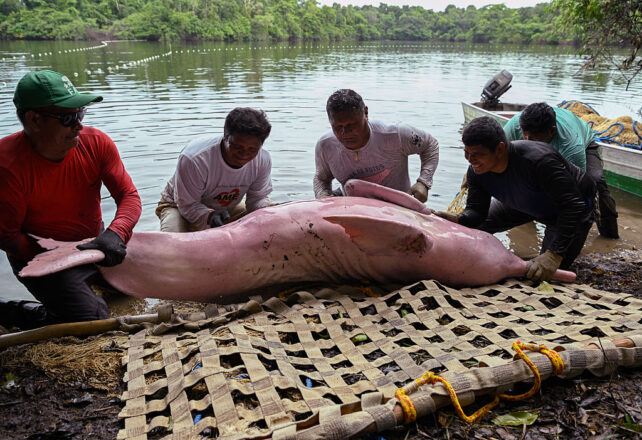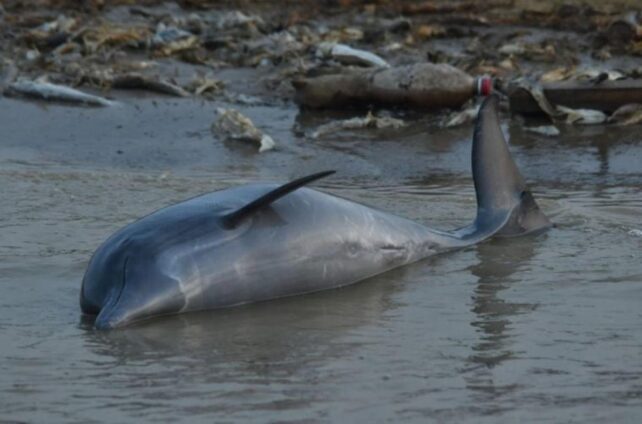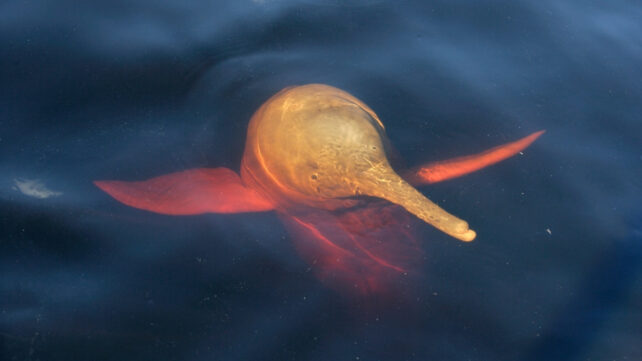In 2023, a severe drought heated several Amazonian lakes until they became hotter than a hot tub. Brazil's Lake Tefé hit 41.0 °C (105.8 °F).
The resulting conditions killed more than 200 dolphins, countless fish, and many other aquatic animals by the thousands.
From the world's reefs, to eels, birds and African elephants, this is yet another mass mortality event of Earth's wildlife now attributed to climate change.
Related: Amazon Rainforest Facing Drastic Collapse From 2050, Scientists Warn
"The climate emergency is here, there is no doubt about it," hydrologist Ayan Fleischmann, who was sent to investigate the lake incident, told AFP.

Fleischmann, based at the Mamirauá Institute for Sustainable Development in Brazil, and colleagues compiled satellite data and direct measurements of the lakes in the region during the 2023 drought.
They determined a confluence of conditions conspired to create the Amazonian lakes environmental disaster, including low wind speeds, low water depths, very high solar radiation during 11 days without cloud cover, and hazier water which absorbed more of that sunlight.
"This unprecedented drought intensity has been attributed to climate change, including widespread warming of the oceans, in particular of the North Atlantic, in combination with a moderate to strong El Niño event," the team write in their paper.
Temperatures exceeded 37 °C in 5 of the 10 lakes examined, but it was likely the extreme temperature swings of up to 13 °C that caused the fatal thermal stress in wildlife.
"A 10 °C increase in water temperature is unparalleled," University of Greenwich ecologist Adrian Barnett, who was not involved in the study, told journalist Phoebe Weston at The Guardian. "The volume of energy needed to achieve this in such huge volumes of water is jaw-dropping."

At the time, the World Wildlife Fund reported a loss of 10 percent of the local dolphin population within just one week, including 130 pink river dolphins (Inia geoffrensis) and 23 tucuxi dolphins (Sotalia fluviatilis), both endangered species.
Those numbers would continue to rise, totaling around 330 dolphin carcasses found around the lakes.
"When the water reaches 41 °C, the fish simply stop functioning: their enzymes get blocked, their metabolism collapses and they die," Adalberto Val, biologist from the Brazilian Amazon Research Institute, told Noticias Ambientales.
This region, including Earth's largest remaining tract of tropical rainforest, holds about a fifth of Earth's freshwater, but the changing climate conditions are drying that up.
Scientists have already warned of the Amazon rainforests' fast-approaching collapse. Now Fleischmann and colleagues have found that the average water temperatures of flood-plain lakes in the central Amazon region have increased by 0.6 °C per decade since 1990.
"We are concerned that these conditions are becoming more common," says John Melack, ecologist at UC Santa Barbara. "The implications for biodiversity and local communities are profound."
This is not a problem that can be solved regionally, researchers warn, as it requires a global systemic effort in fossil fuel reduction. Unless that happens, we'll continue to extinguish ever more massive swaths of the most miraculous things in the known Universe: living beings, including ourselves.
This research was published in Science.

